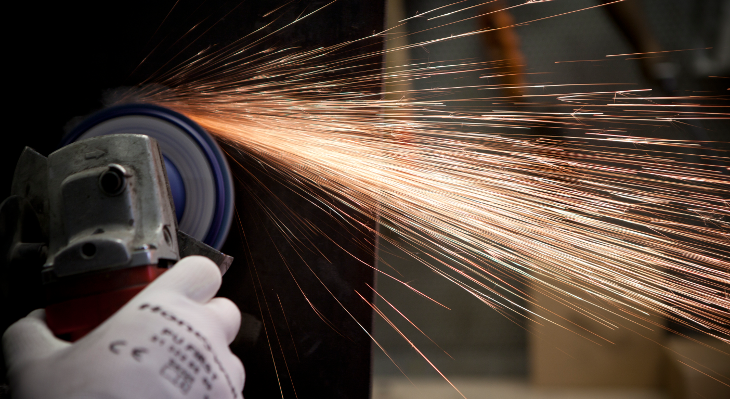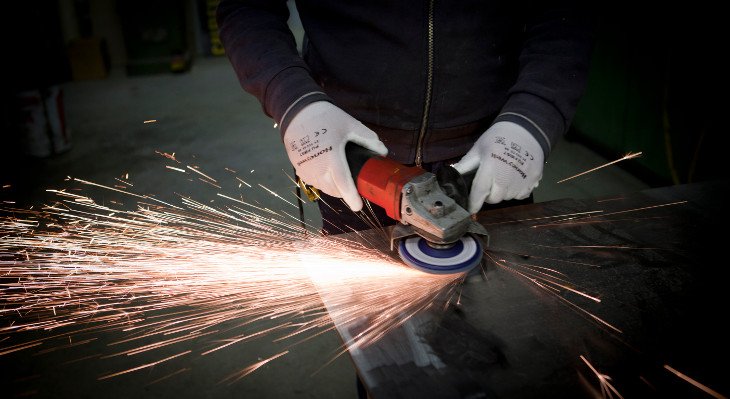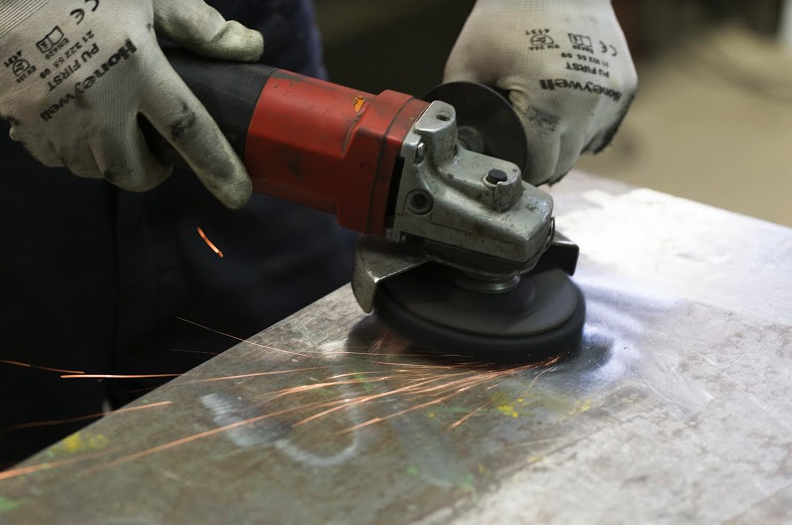The transmission of vibrations to the human body from equipment or vibrating instruments through the handle can be a source of health risk, due to the stresses induced in the apparatuses and internal organs.
For this reason vibrations are contemplated as a physical risk agent from the Italian legislation in the text on work safety, legislative decree 81/2008 (under Title VIII, chapter III).

Even without reaching pathological effects, exposure to vibrations can cause discomfort and disturbance in the performance of work tasks. This is why the Machinery Directive 2006/42/EC requires manufacturers to declare the vibration values emitted by portable tools and machines.
2 different kinds of vibrations
The vibrations transmitted to the human body, depending on the parts of the body involved, are divided into two types:
- the vibrations transmitted to the hand-arm system;
- the vibrations transmitted to the whole body.
The vibrations transmitted to the hand-arm system are those that derive from a vibrating device that in normal use must be held by the worker with one or both hands. These are also the type of vibration that the operator could be subject to when using our abrasive tools.
The vibrations transmitted to the whole body are those received on board of self-propelled machines on rubber or on tracks and means of transport, through driving or flat seats; or those received near stationary machines.
The Italian website called Portale Agenti Fisici (P.A.F. – Physical Agents Portal http://www.portaleagentifisici.it), contains a complete discussion and in-depth analysis of the work risk due to exposure to vibrations and the related prevention and protection measures.

Hand-arm system and vibration risk
Some examples of vibration sources transmitted to the hand-arm system are equipment such as:
- demolition hammers,
- grinders,
- stonecutters,
- chainsaws,
- brush cutters,
- etc…
The main health problems, in case of relevant exposure, are:
- vascular disorders,
- bones or joints problems,
- neurological and muscular disorders.
Prevention and protection measures to reduce vibration risk
The best way to prevent the risks associated with transmitting vibrations to the hand-arm system is to choose suitable equipments that produce the lowest level of vibration.
Let’s see some other tips to protect yourself from the risk of vibrations:
- Introduce adequate and regular maintenance programs for work equipment and protection systems.
- Limit the duration of the exposure.
- Organization of working hours that allows alternating exposure to non-exposure cycles.
- Correct methods of tool grip.
- Adopt work procedures suitable for hands warming before and during the work shift.
- Perform hand exercises and massages during work breaks.

Summing up
Hand-arm syndrome (HAVS) and other work-related disorders affecting the upper arm (WRULD) are typical terminologies that define many potentially serious disorders associated with continuous percussion activity and with rotary instruments.
It has generally been acknowledged that the vibration generated by a manual tool is the main factor in these problems which, if not treated in line with the current EU regulation, can cause serious injuries and therefore machine downtime.
Equipment maintenance is a crucial factor to reduce the risk of accidents and pathologies connected to vibration and to extend the life of the machine.
Other technical features such as ergonomic sheaths, self-balancing systems, anti-vibration handles and rear exhausts have been of fundamental importance to reduce stresses and optimize efficiency in order to reduce the time in which the finger is on the trigger / lever.
The tools proposed by Cta Calflex are carefully selected based on the measures used for the control and reduction of vibration and noise, for maximum operator safety.
